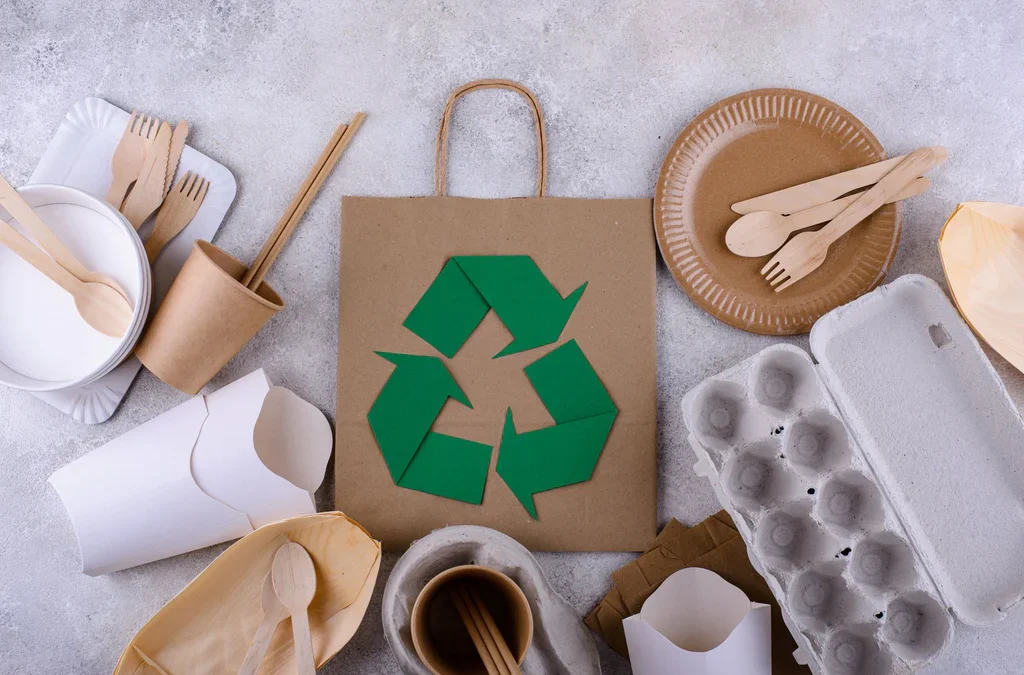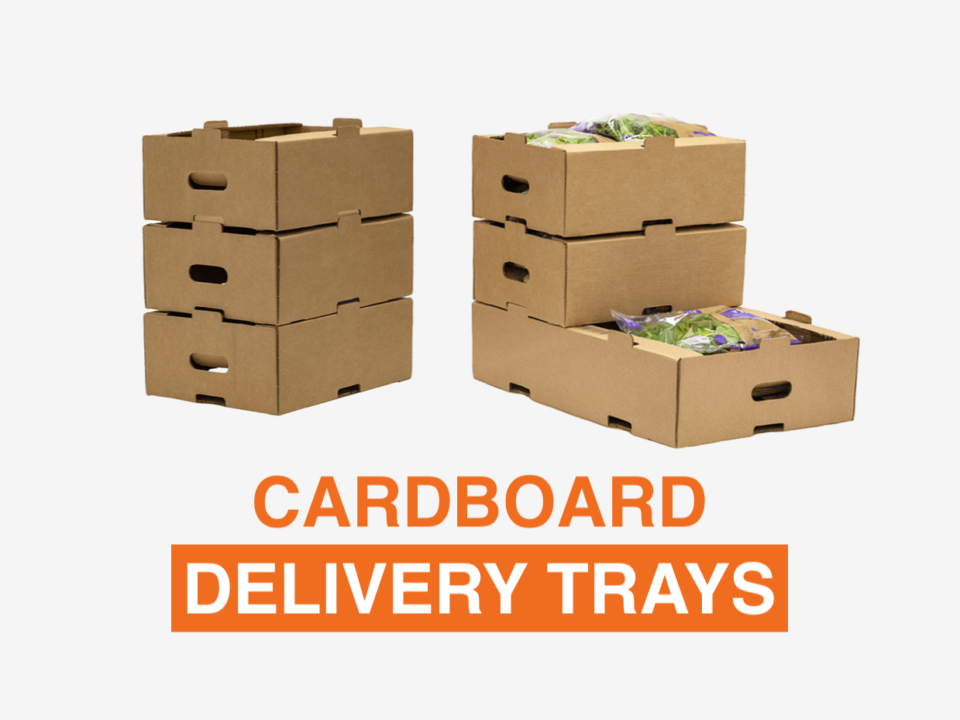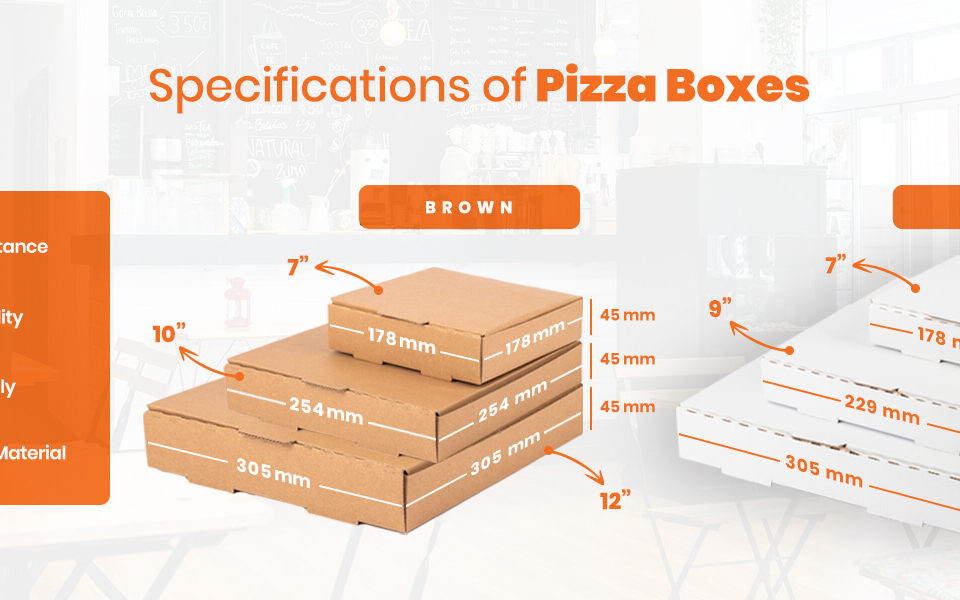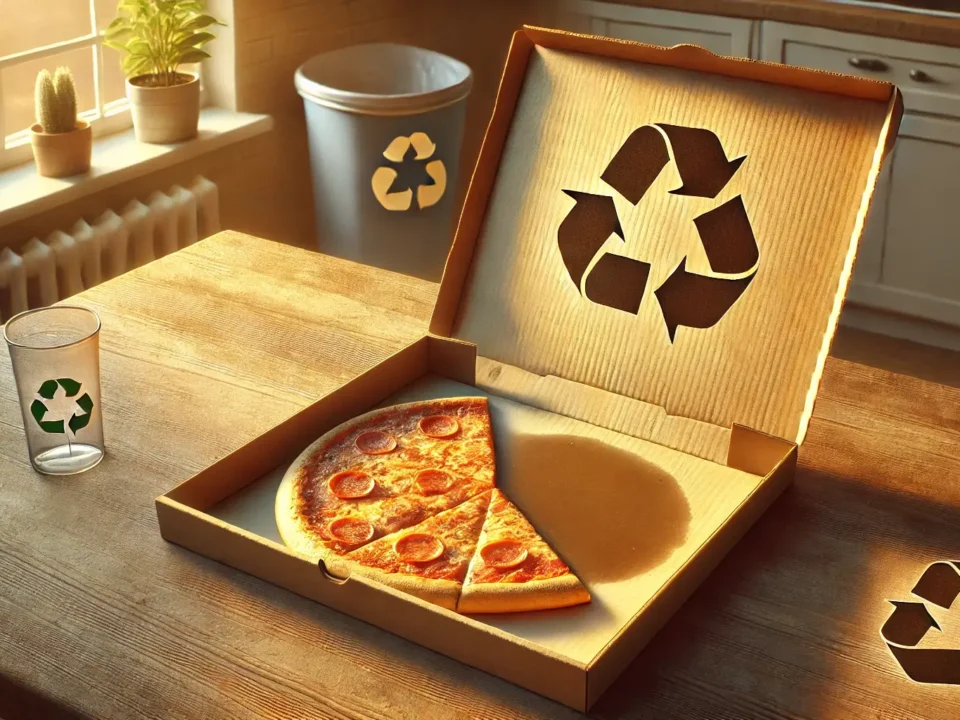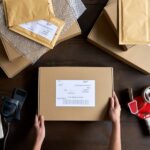
Why Product Packaging Matters in the Digital Age of E-commerce?
January 15, 2024
Hot Melt Tape Vs Acrylic Tape – What’s The Difference
January 16, 2024The packaging of food is essential in preserving its freshness and ensuring its safety. However, the materials used for packaging can have a significant environmental impact. Here we will discuss “can food packaging be recycled or which food packaging is recyclable”, the recyclable food packaging materials, how to properly recycle food packaging, the importance of eco-friendly packaging, the benefits of recycling packaging, and how eco-friendly packaging can benefit your business.
Recyclable Food Packaging Materials
The first step in understanding food packaging recycling is identifying which materials can be recycled. For example, some of the most common recyclable food packaging materials include:
Paper and Cardboard:
Paper and cardboard are some of the most commonly recycled food packaging materials. They are made from trees, a renewable resource, and are biodegradable, meaning they can break down naturally in the environment.
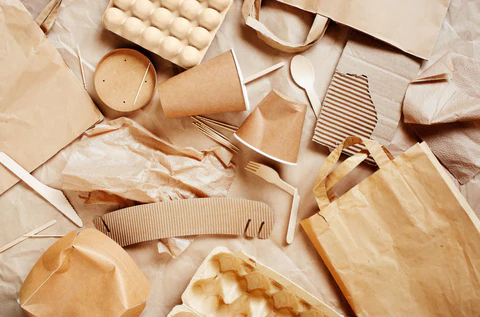

Glass:
Glass is an eco-friendly option as it is made from natural resources like soda ash, sand, and limestone and it can be recycled repeatedly without any degradation in quality. Glass is easy to recycle and can be used to create new glass bottles and jars.
Metal:
Metal is another recyclable food packaging material that is widely accepted in recycling programs. Metal is easy to recycle and can be used to create new products such as cans, cars, and appliances.
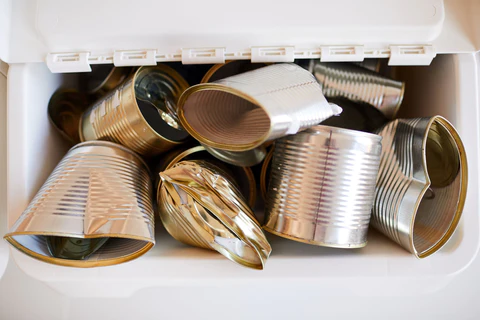
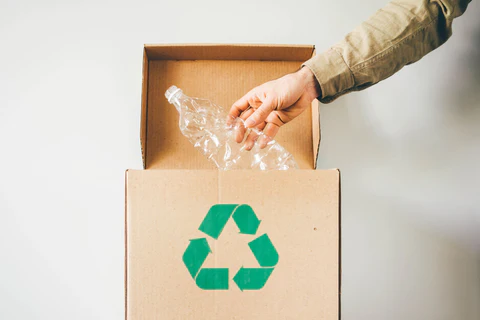
Plastic:
Plastic is a widely used food packaging material, but not all types of plastic can be recycled. Plastic packaging labeled with recycling symbols 1 and 2, such as bottles and containers, are typically accepted in recycling programs.
How Can You Properly Recycle Food Packaging?
Properly recycling food packaging requires understanding what materials can be recycled, cleaning and sorting them correctly, and knowing where to properly dispose of them.
Let’s explore the steps needed to properly recycle food packaging, including identifying recyclable materials, cleaning and sorting, and finding the right recycling.
Identifying Recyclable Materials
The first step in properly recycling food packaging is identifying which materials can be recycled. Some of the most common materials in recycling of food packaging include:
- Paper and cardboard, such as cereal boxes and paper cartons
- Glass, such as jars and bottles
- Metal, such as aluminum cans and tin cans
- Plastic, such as bottles and containers labeled with recycling symbols 1 and 2
It's essential to note that not all plastic packaging can be recycled. Single-use plastics, such as plastic bags and plastic cutlery, are not typically accepted in recycling programs and should be avoided.

Cleaning and Sorting
Once you've identified the recyclable materials, it's crucial to properly clean and sort them before placing them in the recycling bin. To properly clean and sort food packaging, you should:
- Rinse out any food residue with water
- Remove any plastic lids, caps, or rings
- Flatten any boxes or cartons
- Sort materials by type, such as paper, glass, metal, and plastic
The Importance of Eco-Friendly Packaging
Environmentally friendly food packaging is crucial in minimising the ecological footprint of food packaging. By choosing to use eco friendly and biodegradable packaging, you can play a part in reducing the environmental impact of food packaging and promoting sustainability.
What is Eco-Friendly Packaging?
Eco friendly food packaging, also known as sustainable packaging, is packaging that has a minimal impact on the environment throughout its entire lifecycle. This includes sourcing, manufacturing, transportation, use, and disposal or recycling of the packaging.
Eco-friendly packaging is designed to reduce waste, conserve resources, and decrease pollution. It is often made from renewable or recycled materials, produced using clean production technologies, and designed to optimize materials and energy.
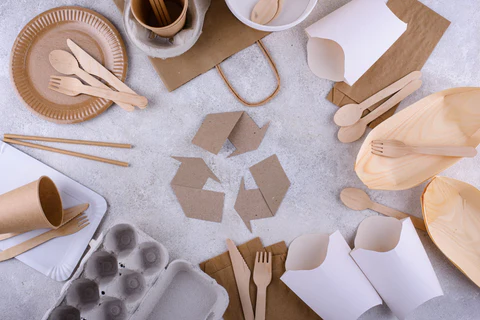
The Benefits of Recycling Packaging
It is important to note that sustainable and recyclable food packaging practices are important for the environment and even businesses that don't frequently ship goods globally.
Investing in recyclable food packaging materials can be beneficial for various reasons.
- Reduction of Waste: Eco-friendly packaging is often designed to be lightweight, which means that it requires less material to produce
- Conservation of Resources: Eco-friendly packaging also helps to conserve resources. It is often made from renewable or recycled materials, which reduces the need for new raw materials.
- Decrease in Pollution: Eco-friendly packaging also helps to decrease pollution. It is often biodegradable or compostable, which means that it breaks down naturally in the environment and does not contribute to pollution or waste.
- Lowering Carbon Emissions: Recyclable food packaging can also help to lower carbon emissions and carbon footprint. It is often made from renewable or recycled packaging materials, produced using clean production technologies, and designed to optimize materials and energy.
How Does Eco Friendly Packaging Benefit Your Business
Recyclable food packaging can benefit your business in several ways:
- Cost savings: Eco friendly packaging often requires less material, which can lead to cost savings on raw materials and production costs.
- Increased customer loyalty: Many consumers are becoming increasingly conscious of their environmental impact, and they are willing to pay more for products that are packaged in an environmentally-friendly way. By using eco-friendly packaging, you can appeal to these consumers and potentially increase customer loyalty.
- Improved brand image: Using environmentally friendly food packaging materials can help to improve your brand image and reputation. It can demonstrate your company's commitment to sustainability and environmental responsibility.
- Compliance with regulations: Eco-friendly packaging is often biodegradable, compostable or recyclable, which means that it can help your business comply with regulations related to waste management and environmental protection.
- Increased efficiency: Eco-friendly packaging is often designed to be lightweight and easy to handle, which can lead to increased efficiency in the manufacturing and shipping processes.
- Reduced transportation costs: By using environmentally friendly food packaging that requires less material, it can also mean that you need to use less of it, which leads to a reduction in transportation costs.
In conclusion, by making the choice to recycle and use eco friendly food packaging, we all have the power to contribute to the preservation of our planet and its resources for future generations.
Orange Packaging UK is one of the top suppliers of sustainable food packaging UK solutions. Our company offers packaging materials to customers worldwide and creates ideal options to fit your specific needs. Our packaging is made to be lightweight, robust, and easy to recycle, making it a great option for businesses looking to reduce their ecological footprint.
At Orange Packaging UK, we are dedicated to advancing sustainability and reducing waste within the packaging industry.
Frequently Asked Questions About Recyclable Food Packaging
What Packages Can Be Recycled?
Many types of packages can be recycled, depending on the recycling program and facilities in your area. Some common examples include cardboard boxes, glass bottles and jars, metal cans, plastic bottles and containers, paper products and cartons.
What Percentage of Food Packaging Is Plastic?
It is estimated that around 42% of plastic packaging is used for food and beverage products. Another report by the United Nations estimates that globally, packaging accounts for around 40% of total plastic consumption, and food packaging makes up a significant portion of that.
How Much Food Packaging Is Wasted Each Year?
It is estimated that around 32% of plastic packaging used for food and beverages is lost to the environment each year, which is equivalent to around 50 million metric tons of plastic waste.







